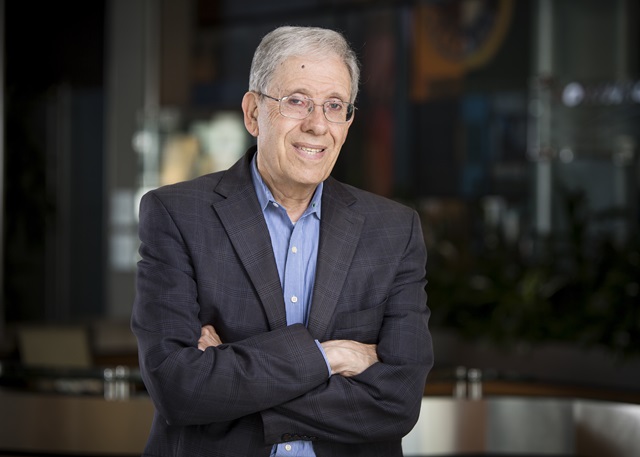By Frank Fendell
When I decided to major in physics, I got a lot of questions.
It was 1955 and I was the first in my family to go to college. I wanted to pursue a career in aerospace, but, at the time, the industry was in its early days; it was all over the headlines, but it wasn’t very mature. People wondered if I’d be able to make a stable living by majoring in science. Still, I kept at it and, with encouragement from junior faculty at my university, I pursued my doctorate in applied mathematics. It was as a graduate student that I met my thesis advisor and lifelong mentor, George Francis Carrier.

The Flexibility of Applied Mathematics
Carrier was a gifted mathematician, clever and inventive. During the summers, he was a consultant at TRW, and at TRW’s predecessors. I liked the way he worked: fast and hell-bent on getting to the answer, with no patience for niceties. People would bring all sorts of problems to him and he’d solve them, jumping from one topic to another. Knowing that his customers were working complex challenges on tight schedules, he always looked for opportunities to make a simplifying approximation or try something unconventional —enabling him to quickly deliver insights that were useful and actionable. To me, he seemed like a seven-seas rescue service.
I wanted to have that flexibility — today, we call it agility. In applied mathematics, agility comes from practice. You learn to treat mathematical methodologies like tools in a toolkit, trying one, then another, or a few in conjunction, to reveal insights or develop a solution that meets your customer’s needs. It can be tempting to have one hammer — a favorite methodology, perhaps even a methodology that you invented — that you want to use to hit every nail, but, through experience, you learn what tools to reach for in different contexts.
The Ballistic Repair Shop
As an applied mathematician, you aspire to be a flexible and agile problem-solver who goes where the action is — and, when I joined TRW in 1965, there was nothing hotter than developing countermeasures to the intercontinental ballistic missile (ICBM) threat. Things that are standard procedure today were being figured out for the first time to meet a national security need; in my case, that often meant working on issues involving the chemical reactions that occur when the different components of a multicomponent fluid interact. While working ICBMs, I was also principal investigator for small projects for three decades. After presenting my findings on various projects, sponsors in the audience would sometimes come directly to me with other unsolved problems — from defense to civil sector, automotive airbags to natural disasters — and I’d pull out my mathematical toolkit and get to work.
In my career, I’ve learned that sometimes you’re building new things, sometimes you’re on the assembly line and other times you’re in the repair shop. For me, that meant helping to extend the lifespan of the MinuteMan III program. While working on solid rocket propulsion challenges associated with MinuteMan III, I learned that providing fixes to existing programs demanded all of my skills and required a particular brand of agility. Understanding the quirks of an existing system without the help of its original designers can feel like trying to talk to someone long departed.
In our industry, nearly every deployed system is called upon to operate past its intended lifespan. While extending a program’s lifespan may not seem glamorous to some, almost anything can be interesting and challenging if you set aside your preconceptions and just give it a chance.
A Succession of Mentors
Being agile has enabled a long career at Northrop Grumman, but my good fortune in finding mentors is the other side of the story. Carrier may have been one of my first mentors, but he was certainly not my last. Mentors have shaped my career, opening my eyes to new challenges to which I could apply my problem-solving mindset. It’s incredible what I owe my mentors: they saw potential in me and said ‘Let’s get to work to meet this requirement.’
I’ve come to disagree with frequent career advice which says you may have to jump companies to try different experiences. Instead, especially at a big company like Northrop Grumman, you may just have to seek new mentors who can help you find your next challenge.
Over the years, I’ve worked on a variety of problems and often have come up with helpful insights. But, for whatever I’ve done, I always think my next solution will be the best one yet.
Are you ready to start Defining Possible? Explore our careers.
Return to Life at Northrop Grumman home page.